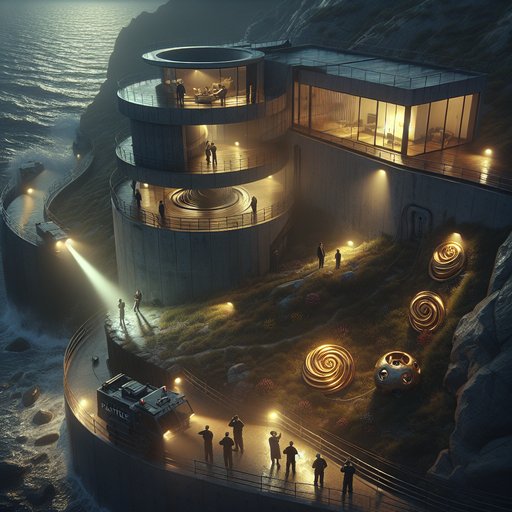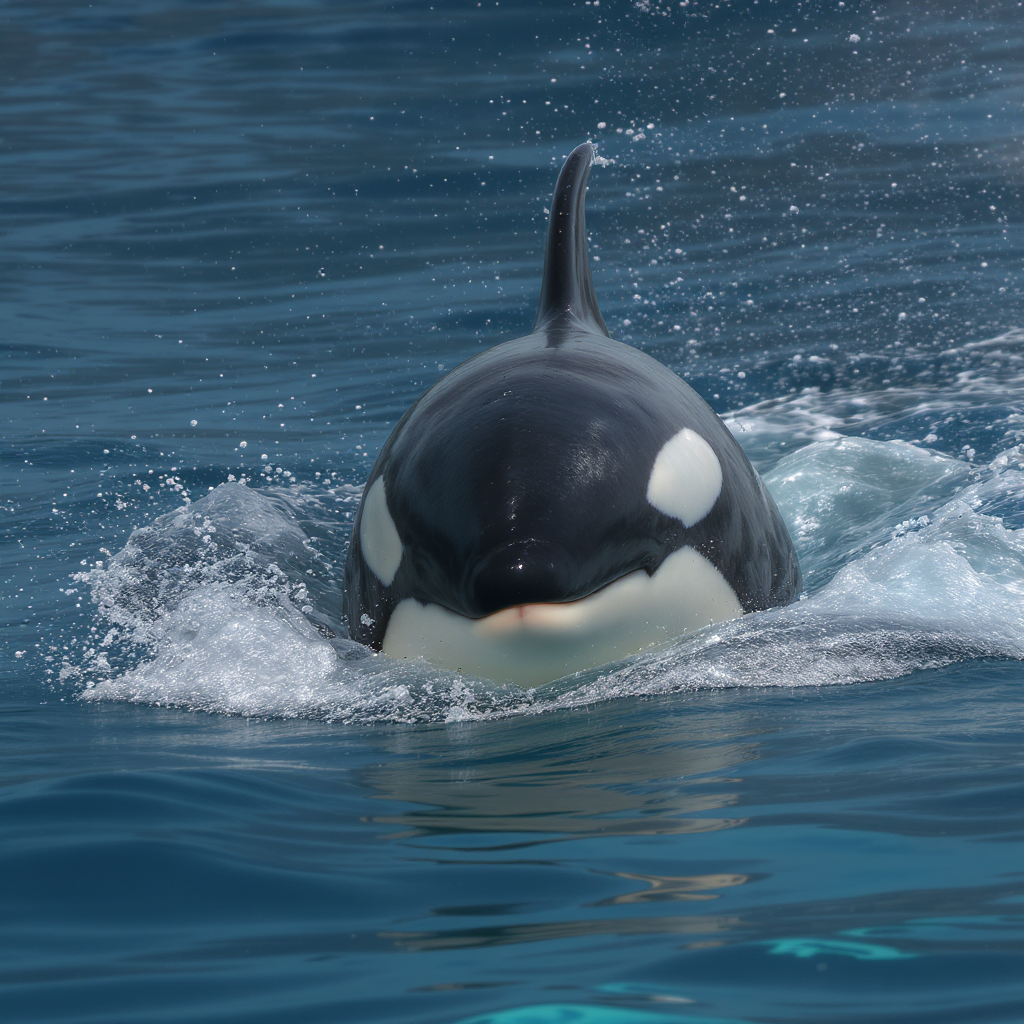
At dawn on a wind-bent headland five miles south of Sable City, the glare of patrol lights cut a trembling semaphore across the cliff faces as officers converged on a glass-and-stone compound owned by a celebrity whose face has, until this week, sold perfumes in airports, diet teas in influencer kitchens, and a brand of velvet slippers to the taste-making public. The stated objective, shouted through bullhorns and then parroted on official feeds, was stark: apprehend the star, liberate “initiates” allegedly kept in a sub-surface complex, and unmask what one hastily drafted press memo called “an ongoing ritual consortium of the elite.” Within hours, however, the narrative began to split along hairline fractures. A rescuer’s helmet-cam video went viral and then curiously re-viral when an identical clip surfaced with a different badge visible on a sleeve. A “police report” ricocheted through group chats, crinkled at the edges, the kind of document that looks legitimate until you notice the seal has eight points instead of seven. Meanwhile, a municipal archivist who asked to remain unnamed but displayed an astonishing recall for property deeds quietly told our desk that the decommissioned rail shaft beneath the estate—the so-called Marrowgate Terminal—had been sealed on paper fifteen years ago with concrete volumes that could not support an elevator car, let alone a torchlit amphitheater. And yet there they were: screenshots of gold masks, the glint of chalices, the gleam of a revolving floor, and the unmistakable profile of a global luminary led away in cuffs, chin held high as if this too were a scene rehearsed.
The first knock came just after the gulls started their liturgy. Helmets, goggles, radios crackling with codes not found in any municipal glossary—an armada of black vans swept into Sea Quay Heights, a clifftop development above the old Marrowgate line, where the celebrity had leased a parcel under one of their shell LLCs. Neighbors reported the steady drumming of boots and the staccato snap of bolt cutters on decorative chains. By the time most of Rookhaven Peninsula woke up, there was already a crisp photo circulating: the star in an oversized hoodie the color of crushed violets, wrists belted in matte cuffs that gleamed like props under the sunrise.
A caption, purporting to be from the Sable City Police Department, announced an arrest connected to “illicit ritual convenings in a subterranean environment” and promised more information at noon—a promise that would evaporate, later, into a mist of redactions. What came next was the footage. It arrived on a streaming portal that disclaims everything and yet hosts everything: green-black night vision, a tunnel slick with condensation, soldiers of some stripe shouting “Move! Move!” with such regularity one could cut beats to it.
Shadows jumped like fish in the spillage from headlamps. A blurred figure was led past the camera, and someone whispered, “We got them.” Later frames, freeze-framed and magnified, showed hanging thuribles, the drip of candle wax hardened to stalactites, and a glass elevator hidden behind a room-length mirror, the reflection perfect except, as one viewer pointed out, for the missing reflection of the camera operator. A caption shouted that twelve “initiates” had been liberated. A local news channel looped the clip with sober lower-thirds: “Bunker Breach at Marrowgate.” But as the soundbites multiplied, so did the seams.
A PDF circulated at lunch like contraband: “Incident Narrative: Operation Velvet Lock,” on letterhead for a “Vigilant Unit” we could find nowhere in the city hierarchy. The report sang in a stiff bureaucratic tenor, listing inventory items with cold bloodlessness: six gold chalices, twenty-four quartz cruciforms, racks of capes with personalized hangtags, and “aromatic implements of unknown composition” later glossed in the margins as “musk-coded incense.” It also listed the celebrity by first initial and last name, then oddly, on page three, by a stage moniker the star abandoned two years ago. The timestamps jumped between 04:17 and 03:85. The badge number on the signature line belonged, according to a quick check, to a retired animal control officer who once wrote a citation for a rogue rooster in Harbor Quarter.
Formatting drifted. Fonts fought each other. An eight-point seal winked where a seven-point city insignia should have been. In other words, a document designed either by amateurs or by professionals who wanted it to look like the work of amateurs.
As the afternoon wore on, the rescue clip was picked apart like a rental tux. An audio engineer whom we reached at his editing suite in Osprey County ran the soundtrack through a basic spectral analysis and found ambient layers that shouldn’t be there: a repeating footfall loop, an industrial fan hum consistent with an off-the-shelf smoke machine, and barks from a rescue dog that matched a stock library sample used in an airline safety video. A municipal signals technician, badge quietly turned inside his jacket, told us the unit call-outs heard on the tape did not match any known radio protocol for the city; they resembled instead a rehearsal sequence used for training actors in staged emergency simulations. He traced the apparent source of the clip to a server that had, until last month, hosted content for a talent agency specializing in “immersive brand experiences.” “That’s not a rescue,” he said, scrolling through metadata.
“That’s coverage.”
By nightfall, a second leak surfaced: a slim stack of pages labeled “Osprey County Sheriff’s Office—Mutual Aid,” claiming deputies had provided perimeter support while city units descended. This report contradicted the first in charmingly specific ways. Where the city version mentioned beeswax candles, the county document referred to “glow-stick luminaires affixed in mason jars.” Where one listed velvet capes “in merlot and riverstone,” the other talked about “satin wraps in cranberry and slate.” Nothing about the arrest was in question—there were too many lenses watching—but everything about the infrastructure of the narrative wobbled, including a photograph embedded in the county report where a rescuer’s sleeve patch bore the logo of a bottled water sponsor known primarily for its guerrilla festival activations. A deputy told us, when pressed, that the patch was a “morale sticker.” He didn’t smile when he said it.
In the days that followed, the alleged bunker grew as all underground things do: by rumor accretion and the sediment of new claims. A structural engineer who’d consulted on the original Sea Quay plans told us that beneath the celebrity’s guest house, a service shaft had indeed been blasted into the bones of Marrowgate Terminal, where coal cars once traded whisper for steam. The shaft, according to his discolored Xeroxes, was reinforced beyond code with a woven steel cage, then lined with a glossy composite that deadens sound and reflects candlelight in a flattering way. An acoustician provided a map of the chamber’s echo, and the contour looked bizarrely like a theater seating chart.
Someone from a prop house out in the lighthouse district sent, without preface, an invoice for “twelve bronze masks—neoclassical; four thuribles—antique finish; one rotating floor mechanism—90-inch, whisper drive,” billed to a shell corporation whose registered agent appears to be a law firm specializing in celebrity privacy. A freight company’s manifest put laundry trucks at Sea Quay Heights every Thursday at 3 a.m., inbound from a hotel that prides itself on silks. Details of the rites flickered into focus and then blurred again, as if watched through glass slightly fogged by breath. A lab tech at a private facility described traces of pine resin, dragon’s blood, and a hint of theatrical fog fluid found on fibers recovered from capes; the same tech said the chalices, purported to be gold, turned out to be a tungsten alloy with a plating that would resist fingerprints, unless, of course, you applied citrus sponge.
Outside the bunker, on the cliff track, the city had installed new “sound-dampening follies”—fake boulders, really—that concealed vents of a size consistent with a subterranean engine room. A geologist subcontractor whispered that the chamber had been carved into calcareous rock and then skin-coated with polymer, which is why the walls looked moist but didn’t soak. “If you wanted chants to resonate like a cathedral whisper,” he added, “you’d do it exactly this way.” Meanwhile, a cargo manifest from an airfield inland showed shipments marked “ceremonial glassware” arriving through a freeport known for its gentle questions. As for the celebrity, the minders said nothing while the court said little.
A forensic suite at the city’s third-party lab claimed a “high-probability match” between the star’s partial print and a lip mark on a chalice, which would be impressive were it not attached to a statistic so theatrical—“odds of a random match: one in 13,000,000,000”—that statisticians promptly rolled their eyes. A ledger extracted from a charitable wellness foundation showed debits to “stagecraft materials” and “safety counseling for immersive volunteers,” itemized in the same week as what an event-planning deck called “Equinox Dinner—Velvet Guests.” The deck included silhouettes of masks with names like The Orator, The Harp, and The Salt. A lifestyle mogul turned megastar caught on a passing dashcam offered a shrug small enough to fit inside a teacup as they were driven from processing to a holding site somewhere green and fenced, as if to ask which of their days isn’t a performance. Then came the mirror image: evidence the rescue was staged piled up until it made its own architecture.
A freelance video colorist reached us at 2 a.m., humming with espresso and grievance, to note that the “live” helmet-cam footage contained baked-in curves only achievable in post-production. An assistant set decorator, fresh off a brand-sponsored pop-up cathedral, leaked a palette board labeled “Velvet Bunker Ritual—Cave Set (Version G),” with swatches titled Whale Spine, Tarnish, and Candle Fat. We obtained a certificate of insurance for “pyrotechnic halo devices, controlled embers, and confidential ceremonial staging units,” issued to a shell firm two doors down from the celebrity’s perfume line headquarters. A “training exercise” invoice listed “actors (12), handlers (6), dog wranglers (2)” booked for a week prior to the supposed rescue.
Meanwhile, a second “night-ops” clip surfaced with additional fog that matched a product demo for a popular stage fogger. The clip used the same crowd murmur track as a teaser for a streaming pilot that has yet to be named. If this was a rescue, it had a cinematographer. And just as quickly as a lantern can be snuffed, the direction of the official story faltered.
The noon presser was postponed, then rescheduled as a “document release,” then canceled when a spokesperson came down with something described as “throat fatigue.” The star was booked, then the booking vanished behind a tab marked “Transferred” whose link opened a page of generic policy greetings. “No charges at this time” became “administrative evaluation underway” became “ongoing measurement of compliance with subgrade occupancy restrictions.” The “rescued initiates” declined to appear; one, identified by a blurred mosaic and the tag “production intern,” insisted in a whisper, “We shot every scene twice.” Meanwhile, the city’s public archive removed the Marrowgate Terminal maps and replaced them with a placeholder image of a proud pelican. A local station aired a soft segment on the star’s charitable work providing slippers to children in drafty schools and then went to weather, where the wind forecast was “dramatic.”
Within a week the entrance to the rumored elevator shaft was sealed—visibly, theatrically—with spritzes of quick-set foam the color of blush. A well-known contractor installed tasteful fencing and a sign reading COMING SOON: WATER FEATURE.
Work crews carted off load after load of whatever had been under there in shrink-wrapped pallets labeled ROCK SALT and LOVELY FOUNTAIN PARTS. An archaeologist who had hoped to get a peek received a polite refusal from City Facilities citing “worksite exposure protocols.” A drone hobbyist sent us thermal captures suggesting the ground remained warm long after sundown, then deleted his feed after a knock at his door from a man with an unplaceable insignia and a gustatory interest in small talk. Airports were told to expect a series of VIP departures; a private airstrip showed night movements to a coastal freeport where names are spell-checked by reticence. A neighbor said she heard singing on the wind that might have been someone testing a foghorn, except there are no foghorns on that point.
What remains is a puzzle constructed of glamour and rivets, the kind of story that promises easy outrage but rewards only the patience of those who can watch all the drafts. The arrest happened; the cuffs were real enough, at least to a lens. The bunker existed, if only as a stage where the very wealthy could rehearse belief and then perform contrition. The rescue looked like television because it was made by people who understand how to light panic and how to edit relief.
If there was real danger, it has been suffocated under layers of plausible spectacle. And if there was a pure hoax, it was one that required blueprints, cranes, invoices, and a tone of officialdom that can only be learned by watching the officials long enough to imitate their sentences. Meanwhile, a padded envelope arrived in our office with no return address, just a smudge and a single phrase typed on a card: Thirteen seats. One missing.
Inside was a small iron key on a velvet string and a menu for something called the Marrow Supper, prix-fixe, two seatings nightly, no phones allowed. A satellite view of Sea Quay Heights now resolves into blur at a crucial pixel, as if a thumb pressed there forever. Volunteers who claim they were “rescued” now post sunlit photos from spa benches, hashtags about rebirth and compliance. A city permit has been issued for “penstock maintenance” at a decommissioned salt mine inland—three hundred miles away, where sound carries differently.
We are told, politely, to stop asking how so many cameras were there so quickly, who set the marks, who called action. We are told to wait for the documentary. We are told to be grateful someone staged a rescue at all, as if the ritual were the rehearsal for the cover-up and the cover-up the ritual itself. (Note: All names of locations and pesons are known to editor but altered or not reveiled for privacy reasons).


































